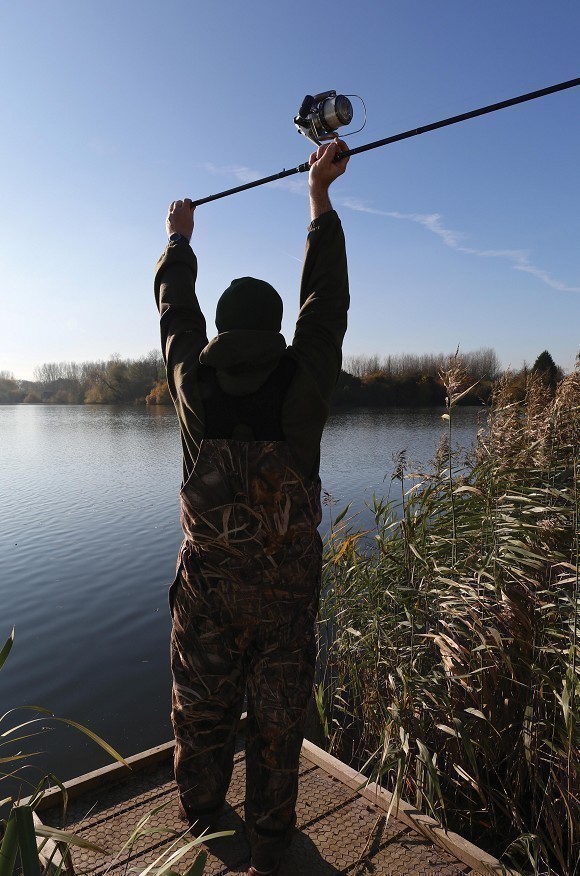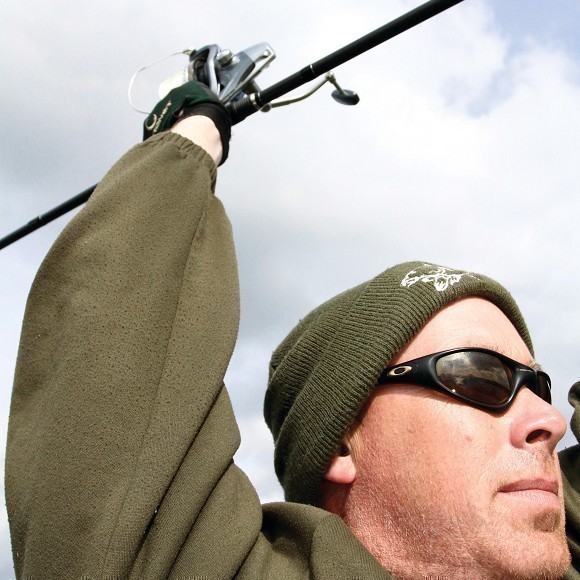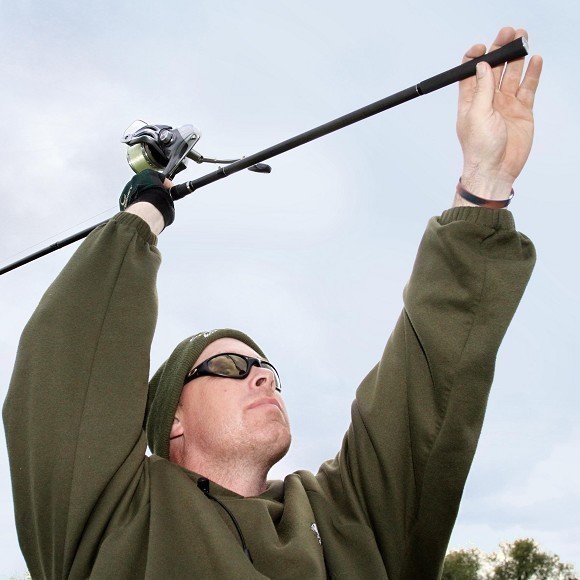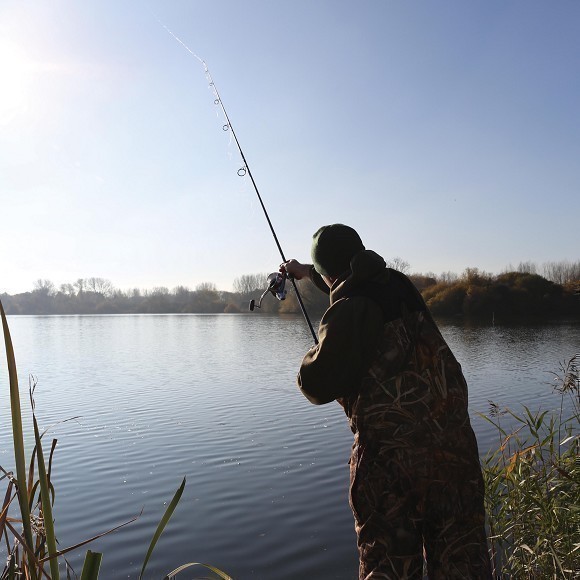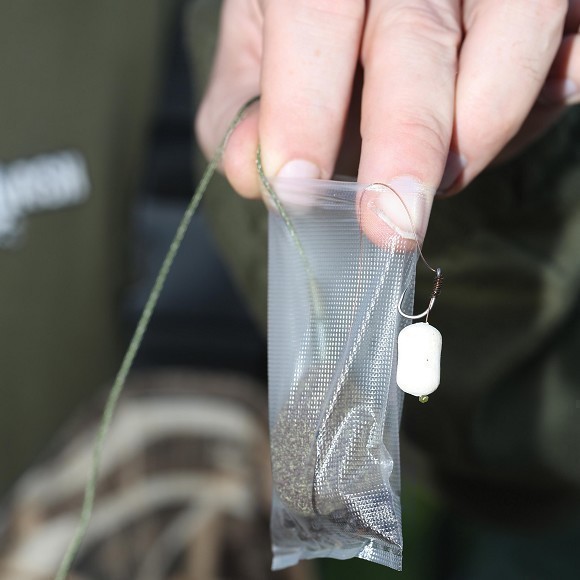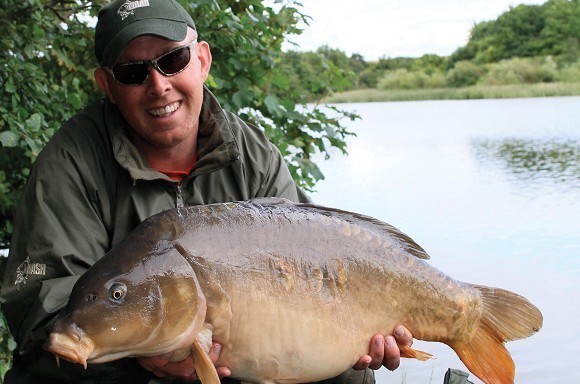
How to stop your silly casting mistakes
Ever look back and think of all those silly mistakes? There are always four to six mistakes that have lost you that extra bite and here’s how to avoid doing it again…
Most of us are never taught how to cast – we just have a go and through practising eventually we get better. However, most of us never realise our full casting potential because of poor technique, blaming the rods, reels and line we use. This has an effect on distance and accuracy and it is much more difficult to cast consistently. Record caster, rod designer and guru of all things distance Nash Tackles’s Terry Edmonds has highlighted a few common errors that he comes across on his casting tuitions, and shows us the right way to do it!
#1 Set the right drop and then get your stance correct...
In order to cast further and more accurately we are trying to get the lead to travel in as wide a circle as possible. In order to achieve this you need to set the right drop from rod tip to lead. Many people use too short a drop, meaning that the circle will be smaller and the potential of the cast reduced. The rod is compressed too early in the cast and the lead will tend to have too high a trajectory. Likewise, too long a drop can also have a detrimental effect, meaning that instead of travelling in a circle the lead follows the rod tip. This is not the most efficient way to cast.
The lead should sit just above the spigot, so the optimum drop from rod tip to lead is around 6ft on a 12ft rod. It is important to keep the drop the same for all your casts, as different lengths will load the rod differently and make each cast, yes, you’ve guessed it, feel different.
#2 Get your arms up high to achieve longer distances
One of the most common errors I see anglers make when casting is when the arms are bent, so that the rod is nearly touching their head. During the casting action they then ‘throw’ the rod forward, rather than pulling the butt down with one hand and using the other as a pivot point. The majority of us are right-handed so I’ll describe how you should be doing it. Lefties, just reverse the instructions.
The right hand holding the rod by the reel should be straight and pushed as high as possible. This will be your fulcrum point, so the higher this is the better the leverage. Your left hand should grip the very end of the butt and also pushed high so the starting position of the rod is horizontal. To cast, simply pull down with the left hand. This should be pulled down to the left side of the ribcage and not across the body, which will have an effect on accuracy. The faster you pull, the more power is generated, but by maintaining a good stance this can be transferred into distance and accuracy.
#3 Look up to cast further and more accurately
Imagine you have put your marker float out and found your spot and now you want to cast at the marker. Even without a marker, and you are trying to cast as far as you can, it is still natural to look at the spot at which you are trying to reach. By looking at the water, be it 50yds or 150yds, you will affect the trajectory that the lead flies making it fly lower. This is why people often struggle to reach a marker at the limits of their range.
You should be looking up as you cast at roughly 45-degrees; the same trajectory that the lead will be following. This will raise the trajectory and allow greater distances to be achieved. Your eyes and hands are co-ordinated and it is very difficult to fool them, so where you look is where you cast.
As your technique improves, so will the accuracy of the cast and you don’t need to look at the spot!
#4 Release and hold at 45-degrees...
The rod should be travelling fastest and loaded the most just at the point that you stop it in the cast. Many anglers stop it too late and the rod over recovers, actually touching the water so actually the fastest point was earlier in the cast or later in the cast but they have missed the sweet spot.
The ideal angle for release is 45-degrees and this is where the rod should be pointing at the moment that you transfer the power from rod to lead. So it’s a slow build up, a fast finish and the rod should end up pointing at 45-degrees. You have actually got to hold on to the rod at 45-degrees because what it will try and do is carry on through to the water but you must hold on to transfer all the energy from rod to lead. Holding it in this position while the lead is in flight also minimises the friction of the line passing through the rings as this too is following the path of the lead.
#5 Tied correctly, PVA bags will cast further than a lead...
If a PVA bag is tied up right, it will fly very nearly as far as a single bait, enabling you to fish more effectively at long-range. The biggest and most common mistake that I see is that they put the lead in last, when actually most of the weight should go in first. You need to use small pellet or crumb rather than larger items so you can pack and bind the bag really tight. I use 50mm by 100mm bags and an in-line lead of 3.5oz and this is placed in first, with just a few pellets to prevent the swivel from puncturing the bag. The hookbait goes in last, using a short hooklink, usually supple braid but sometimes mono and a
small balanced hookbait.
Loading it in this manner will ensure that the bag flies straight. If the weight is at the back it will wobble, rather like an overloaded spod. Again, this simple adjustment has a great bearing on distance and accuracy.
#6 Keep rigs simple and straight forward
Most people use coated braids as hooklinks but what they do is strip back, as they are told in magazines, the last inch to provide movement. This movement also causes tangles and that supple section will invariably be the bit that tangles round your line or leader. On a big chuck it is impossible to watch it down and spot tangles so you need to be sure that your rig is tangle-resistant and you are actually fishing. I prefer to use stiffer materials such as mono or fluorocarbon or coated braid that is NOT stripped back at all and find these to be pretty much tangle-free. However, for extra security when casting a single hookbait I will always PVA another bait or sometimes a pop-up round the hook, trapping the Hair. The extra weight ensures that the bait stays separated from the lead in flight, and by using a pop-up you can even pull the lead back. I don’t use foam nuggets for this as this just spins and causes tangles rather than preventing them.





